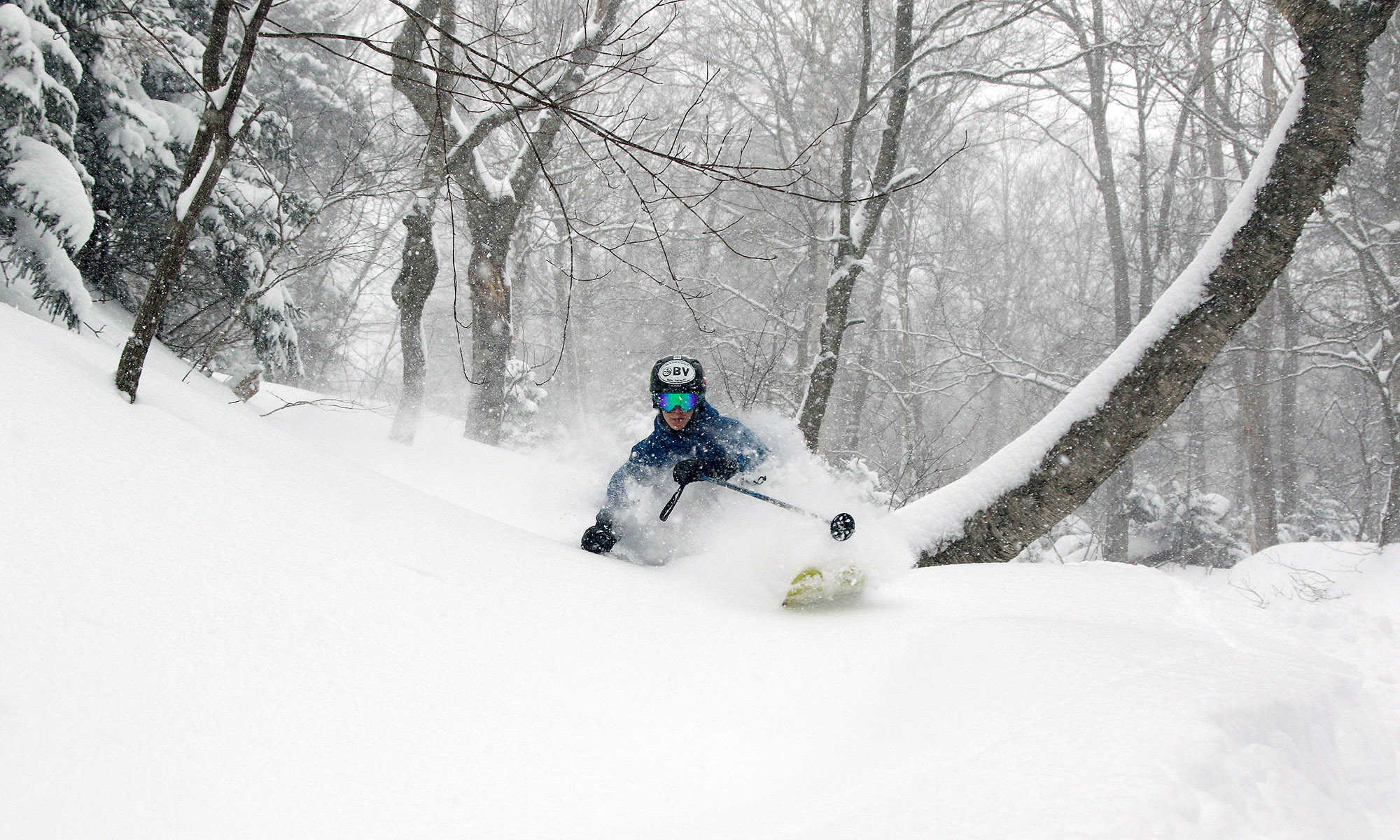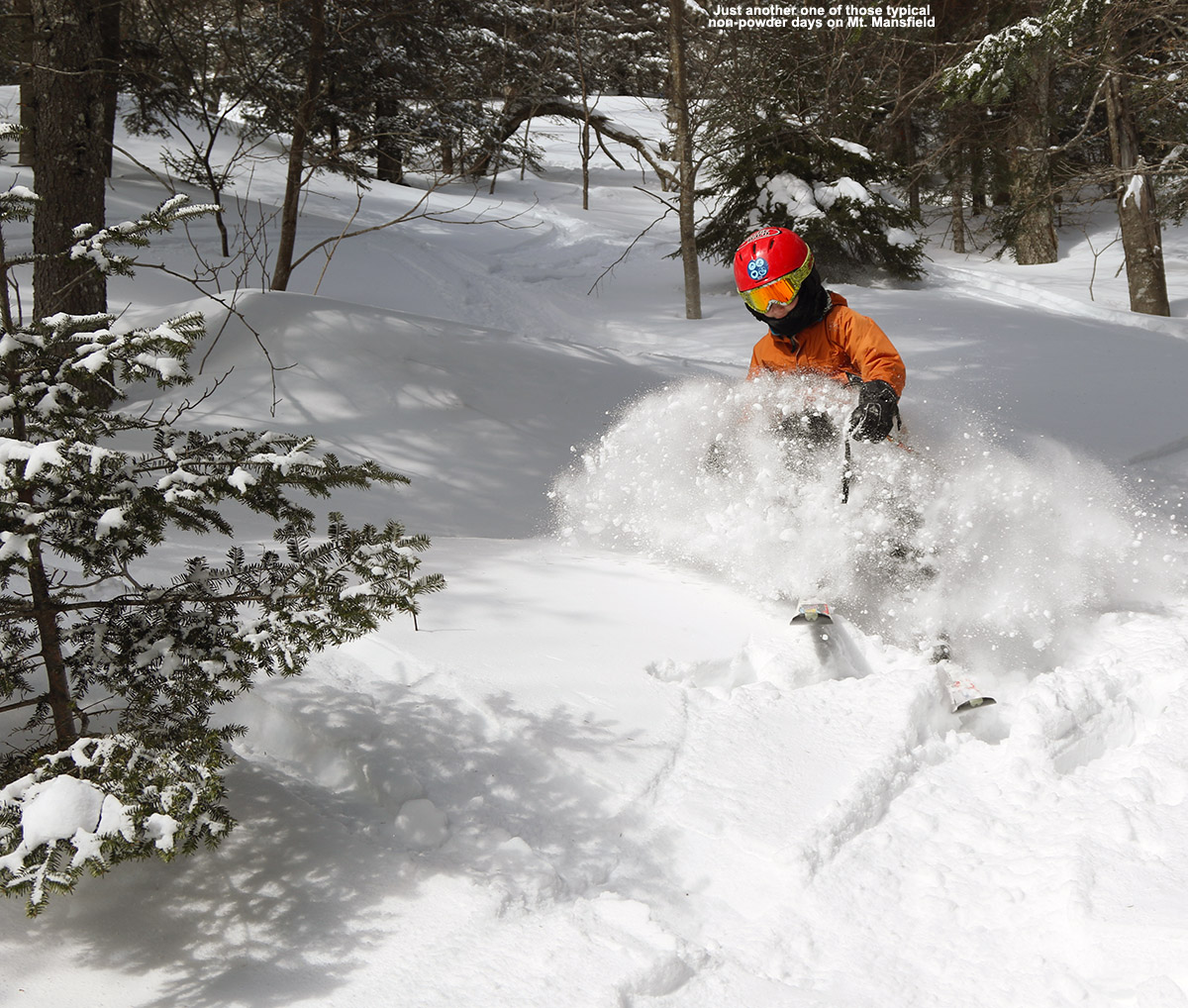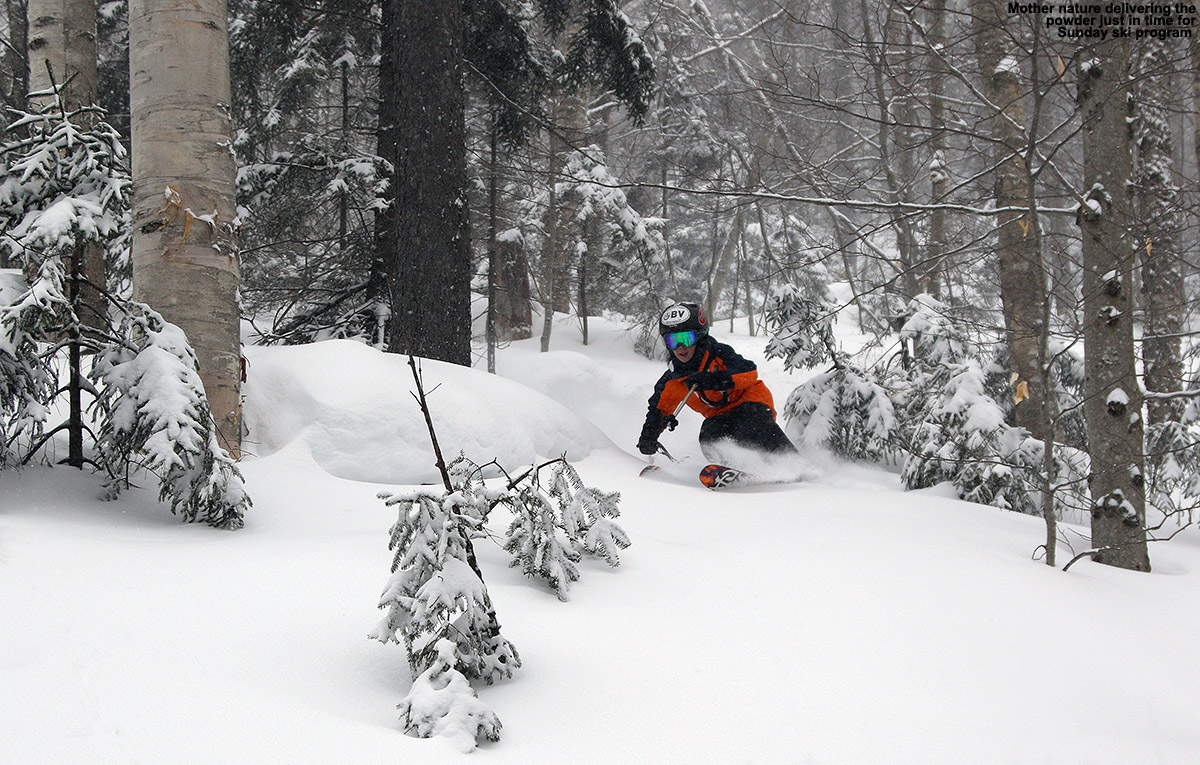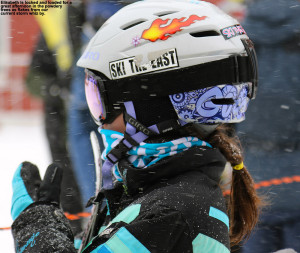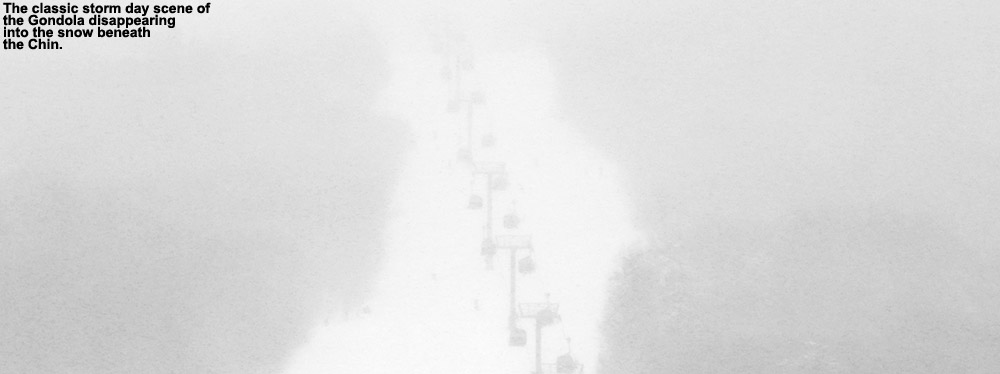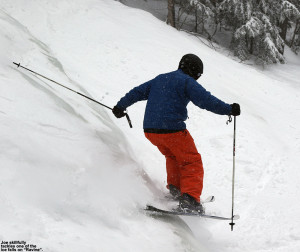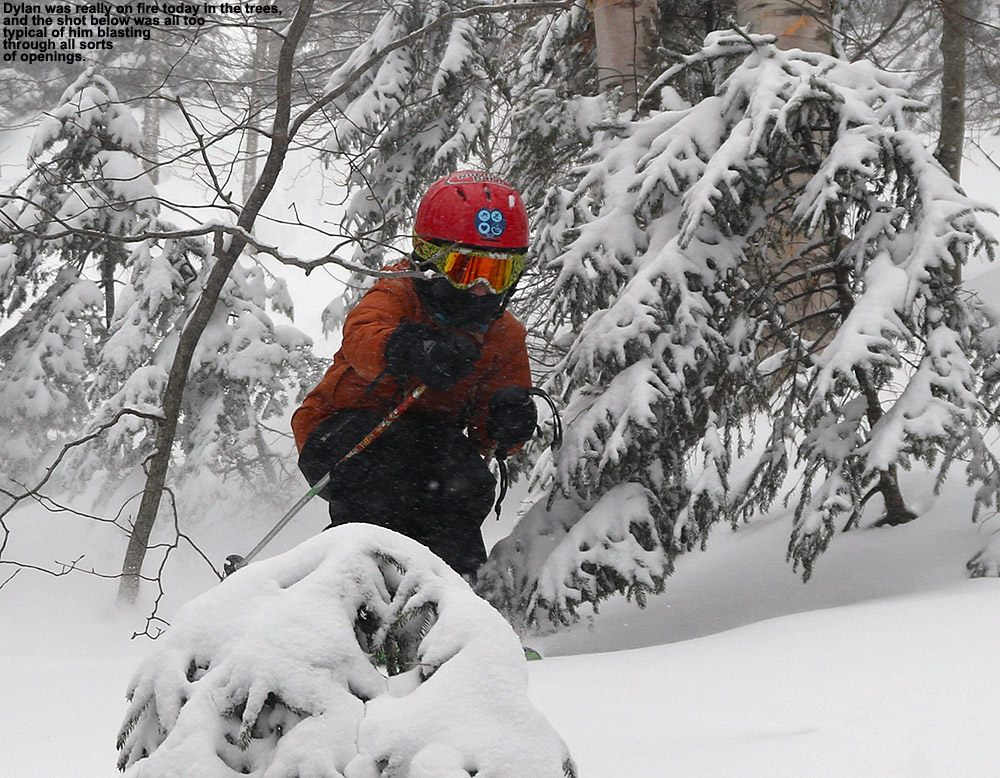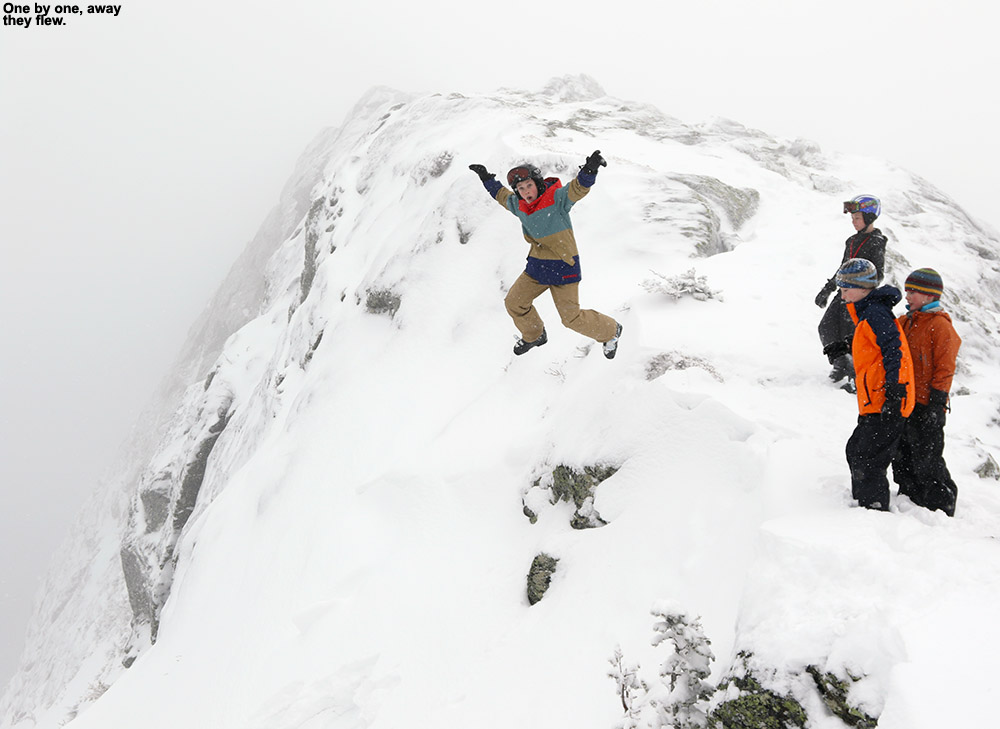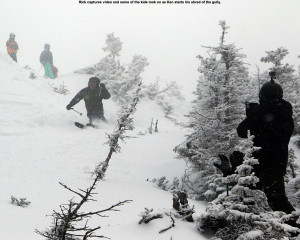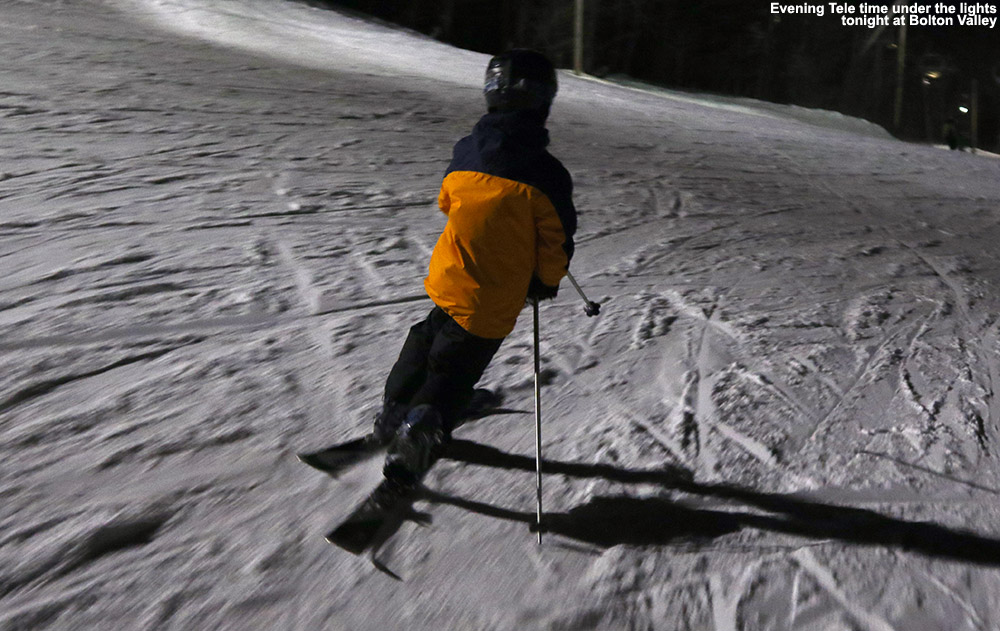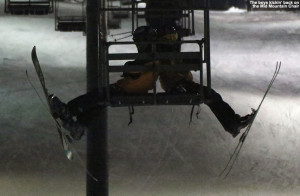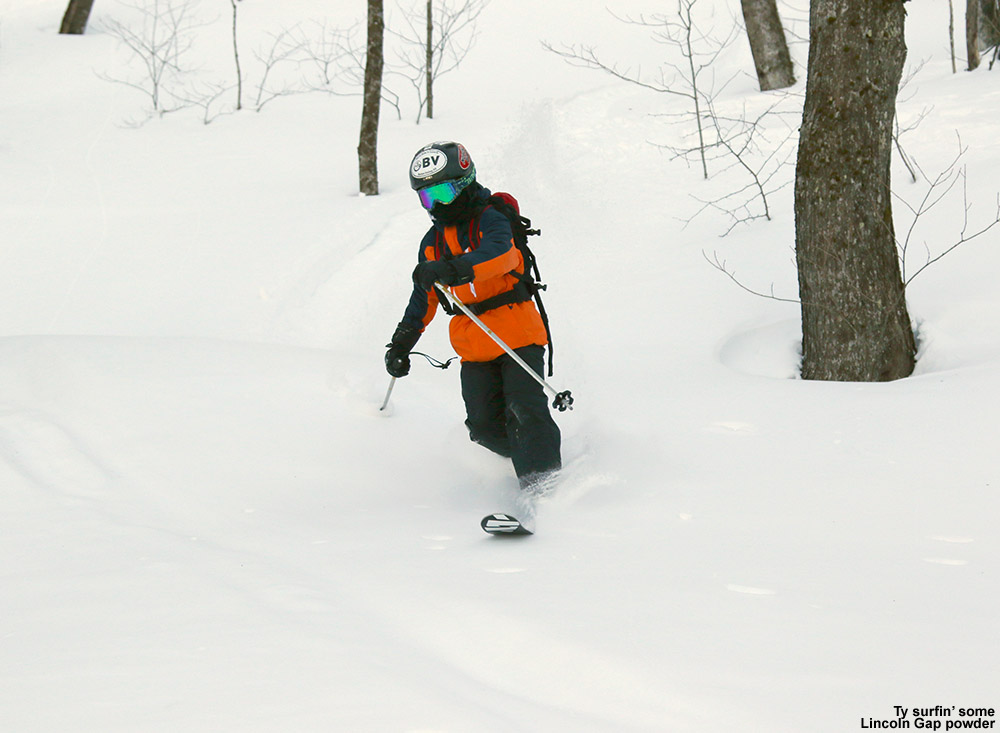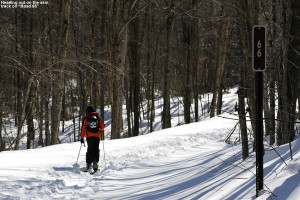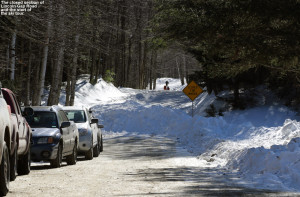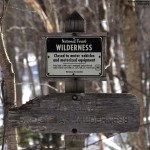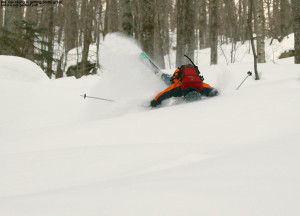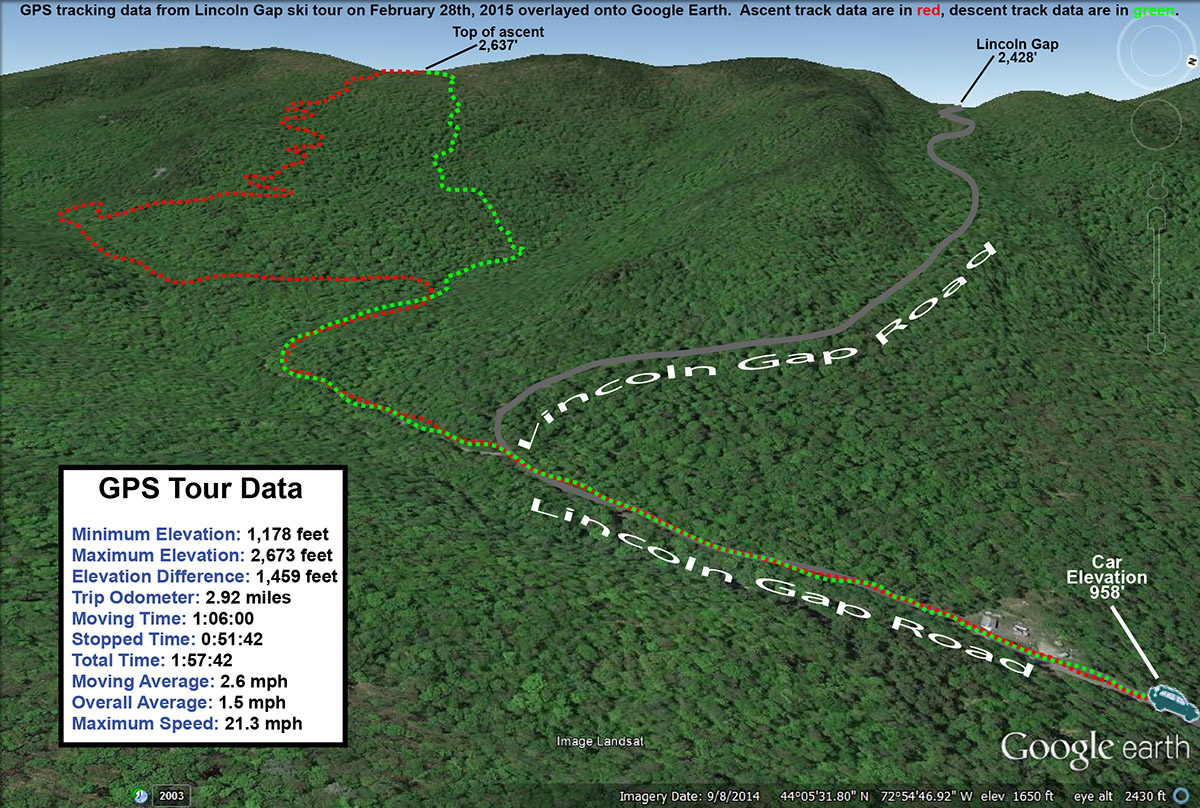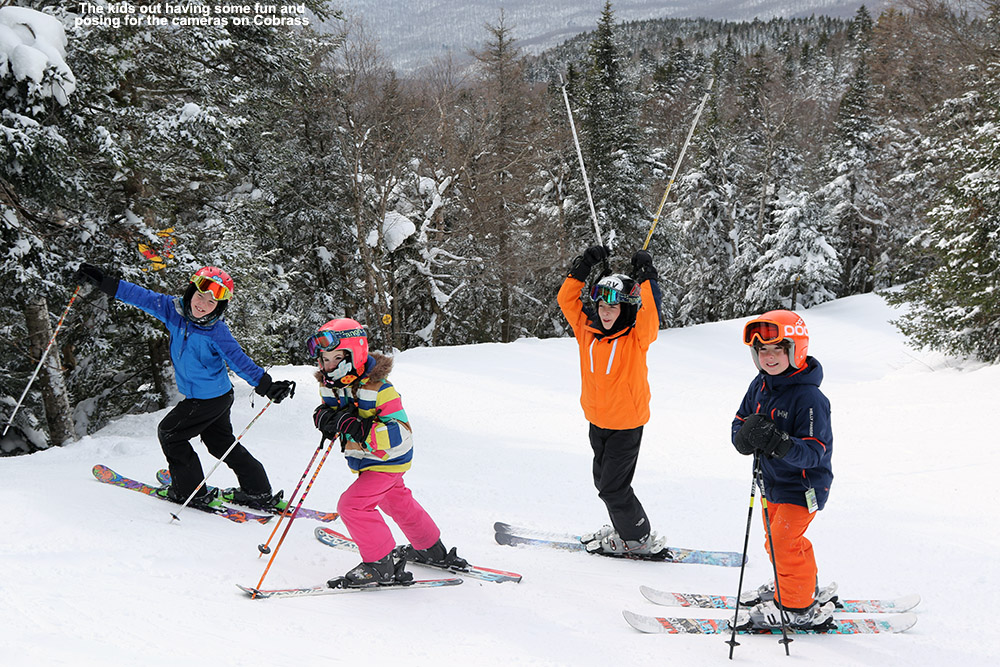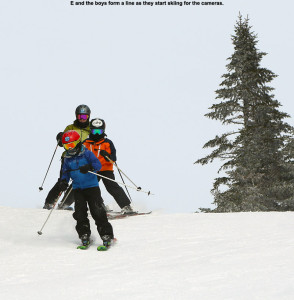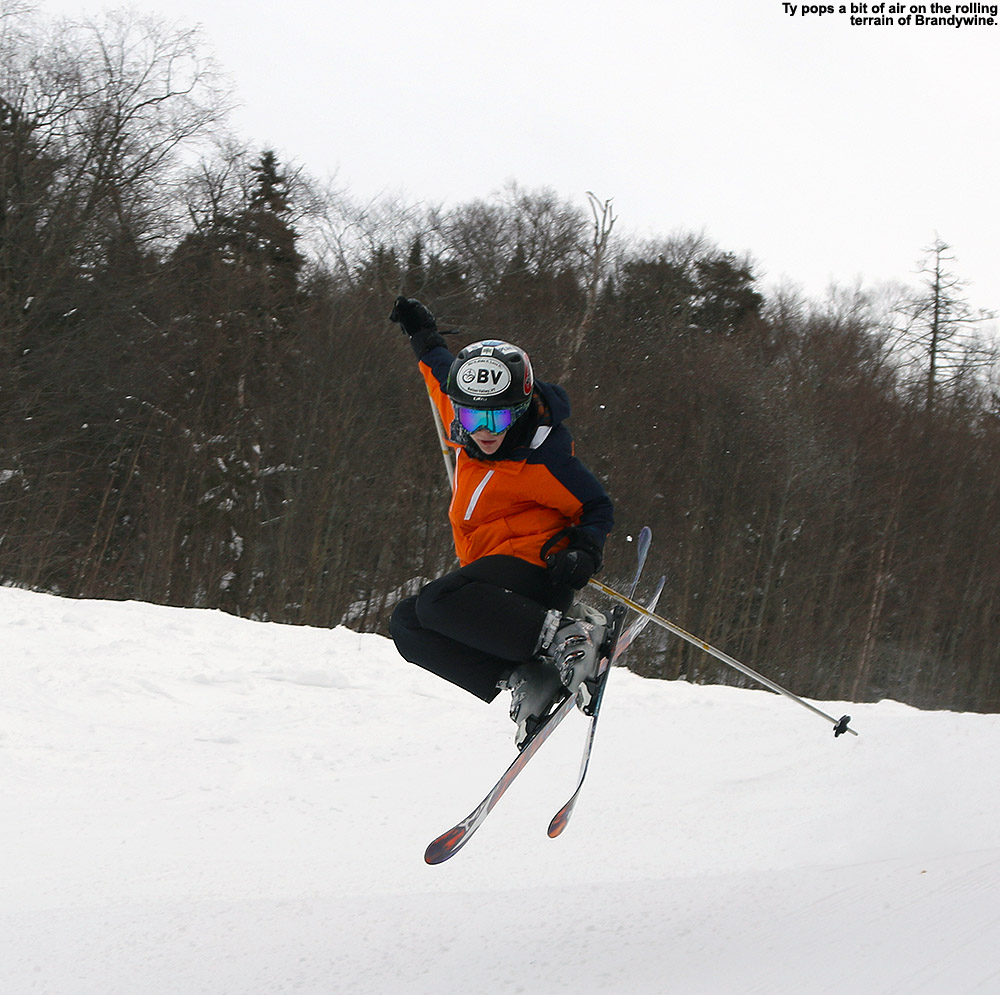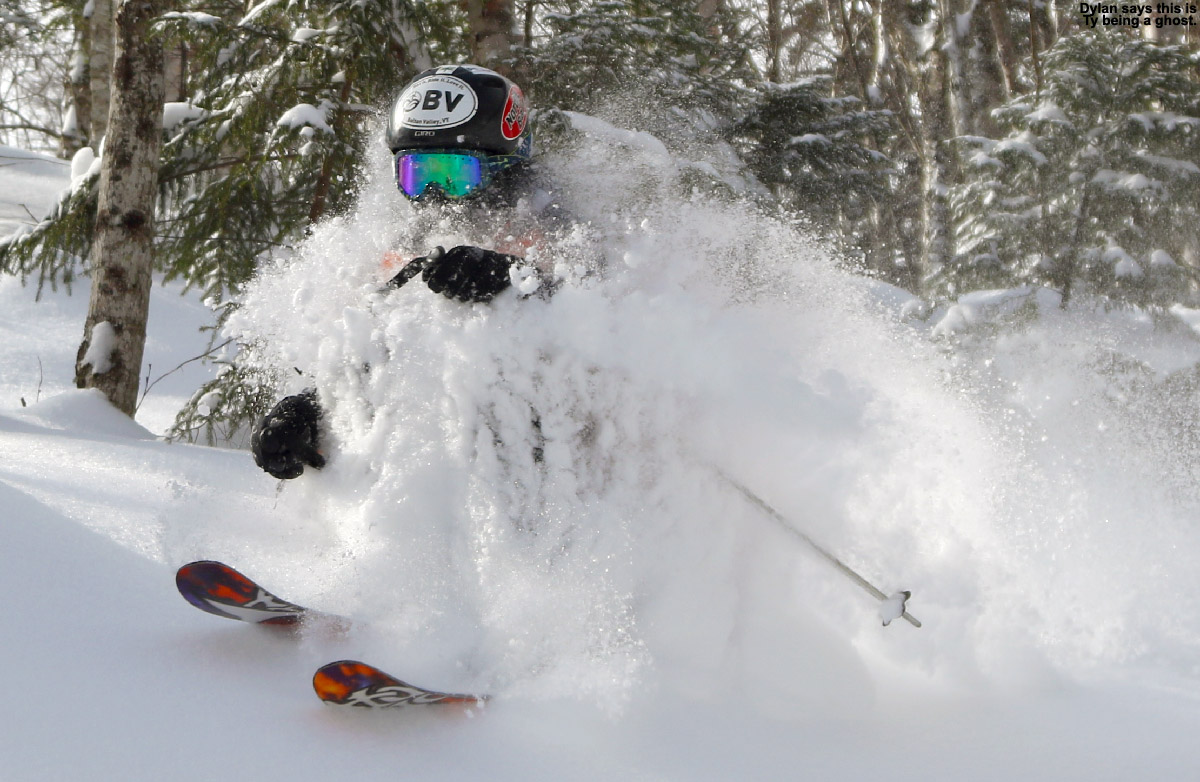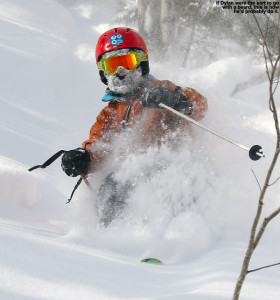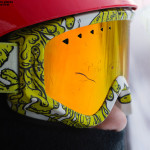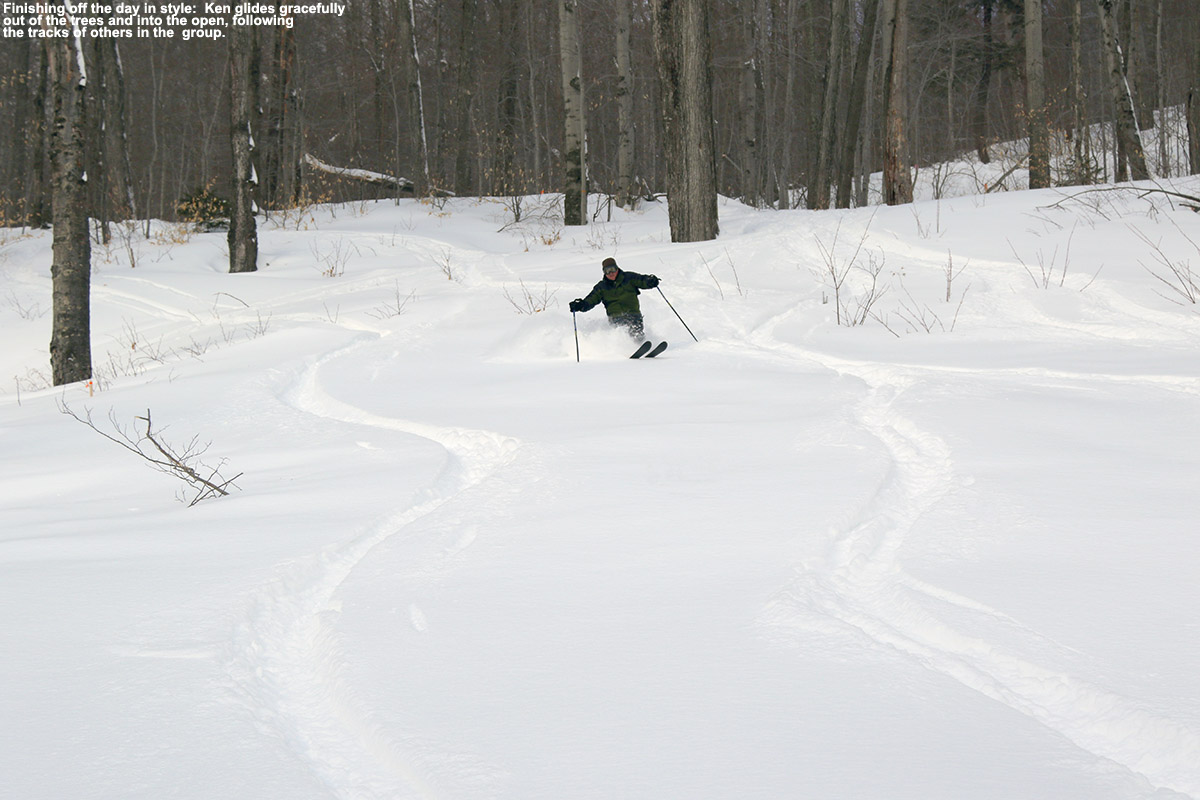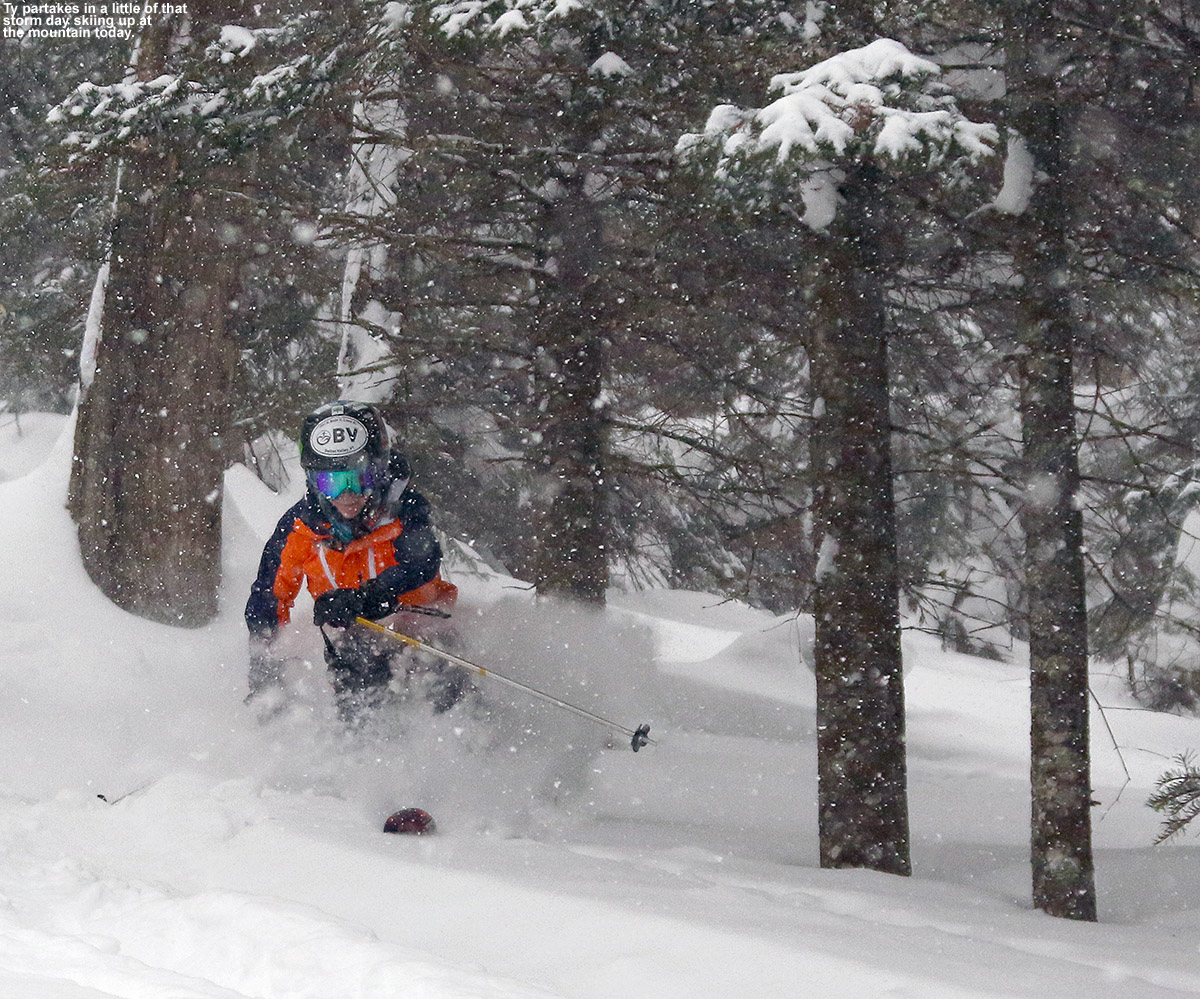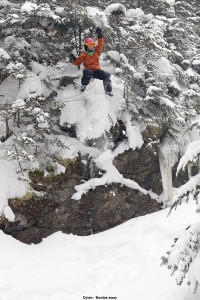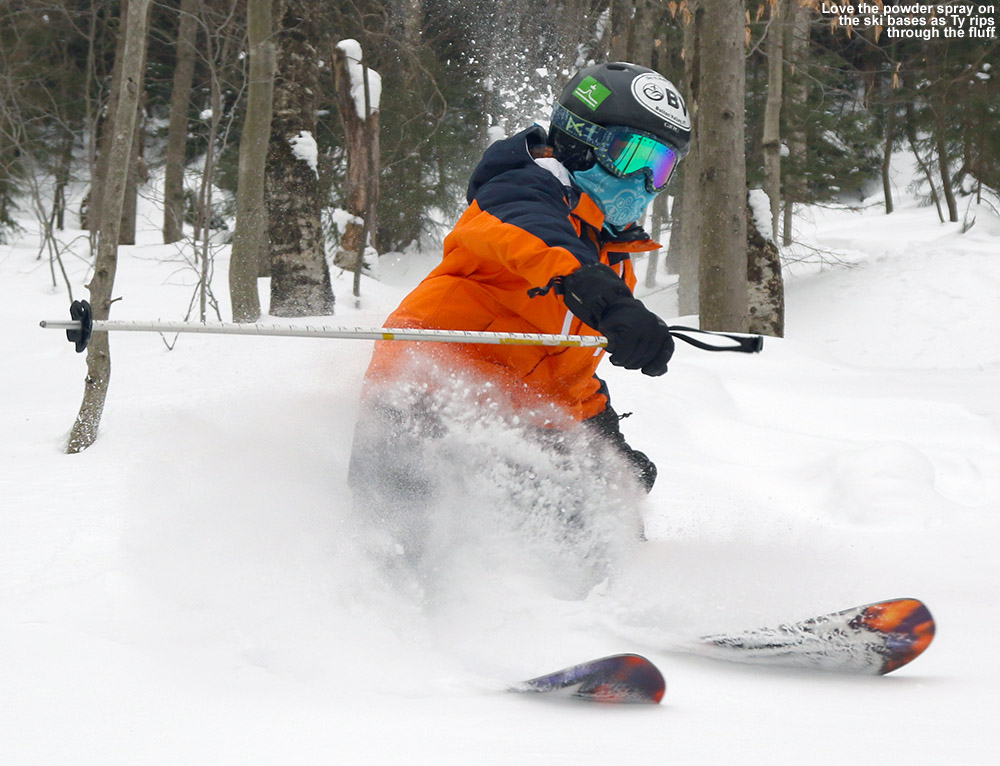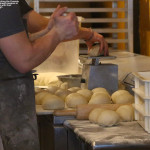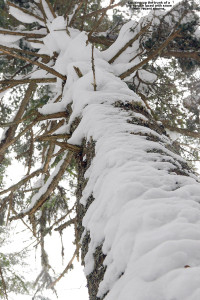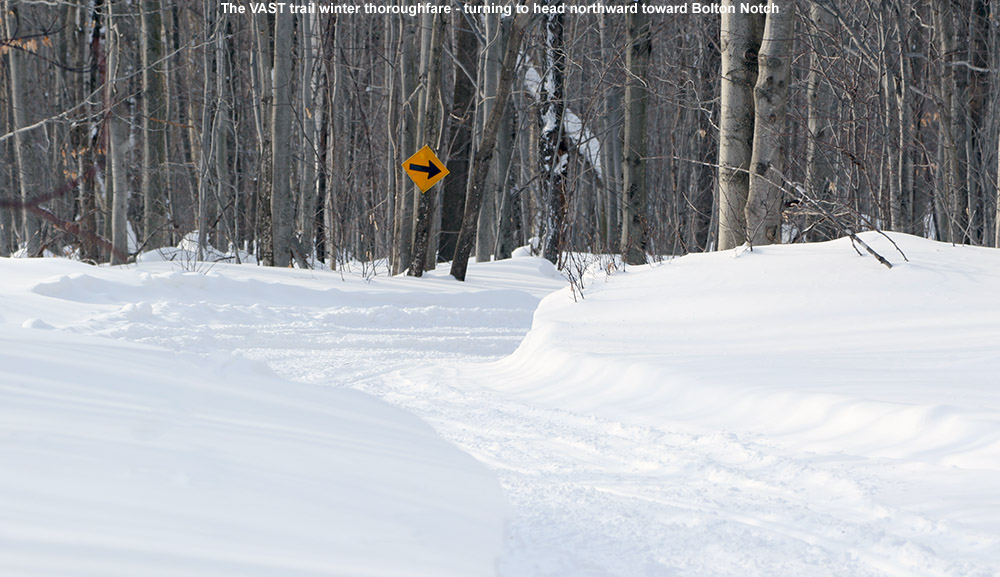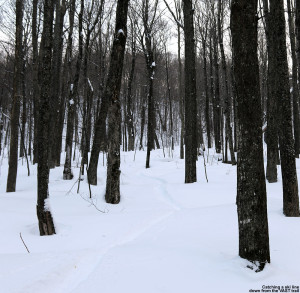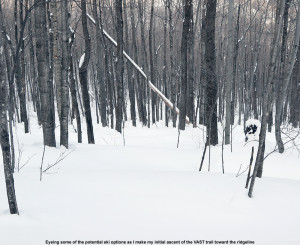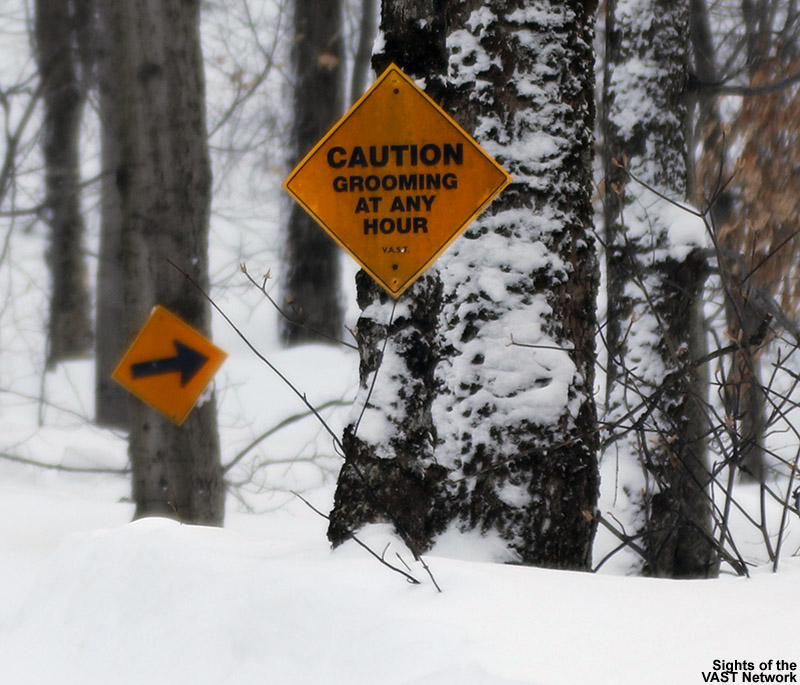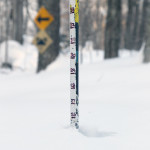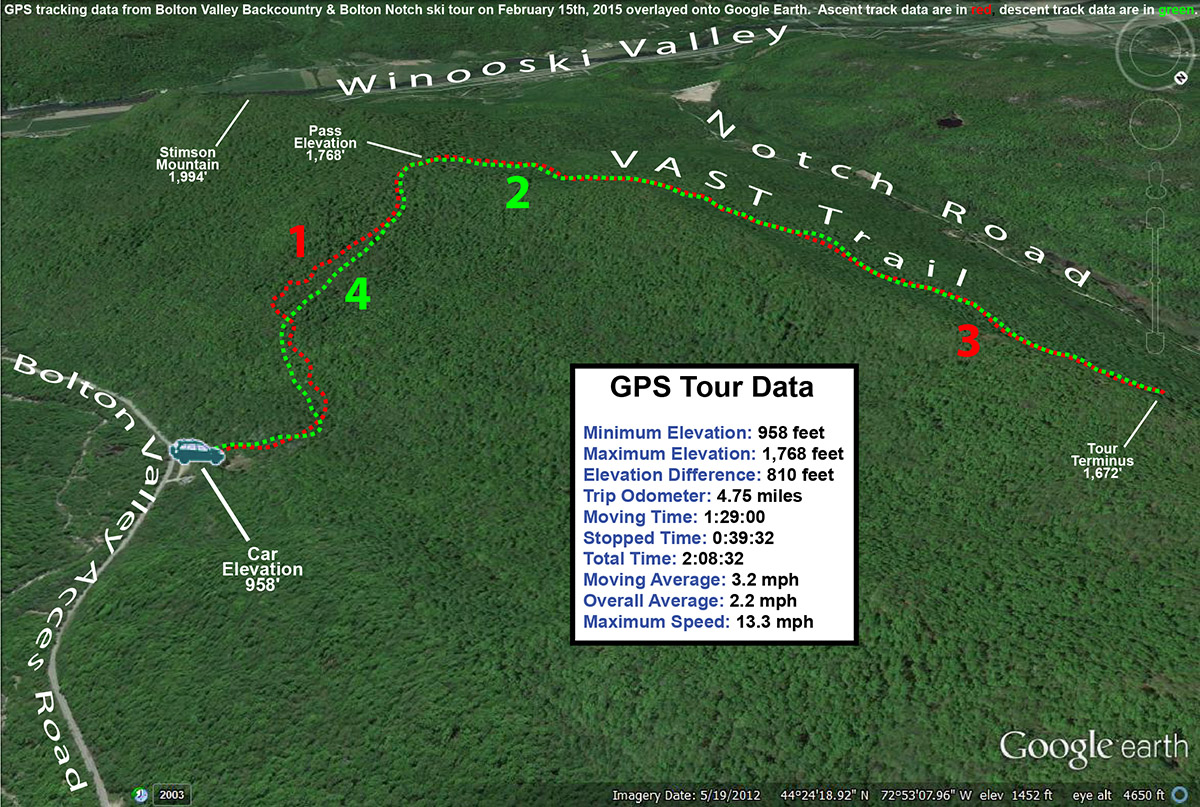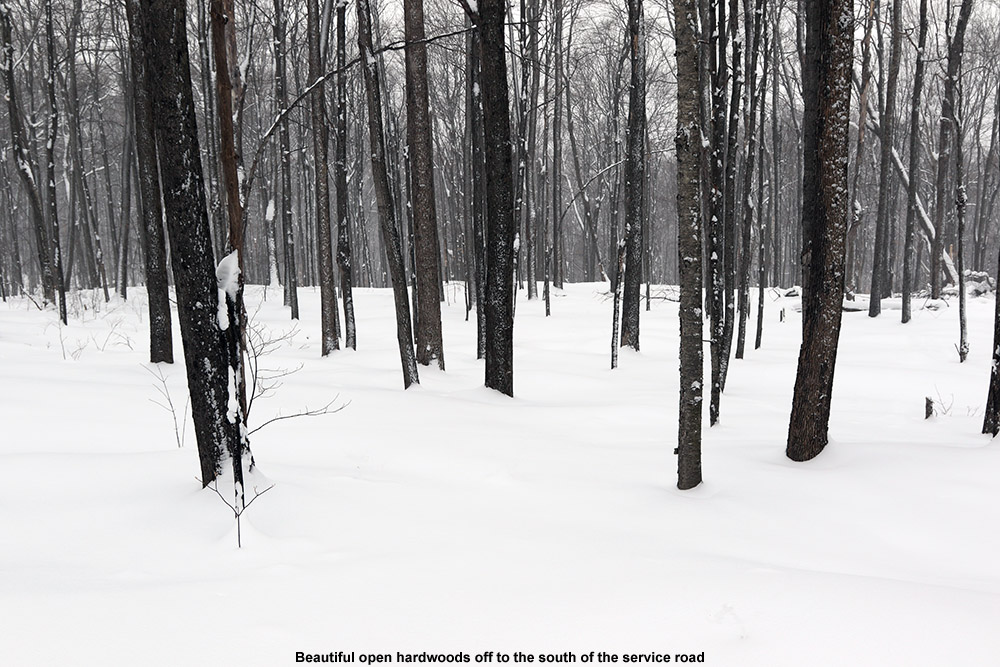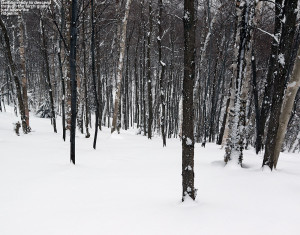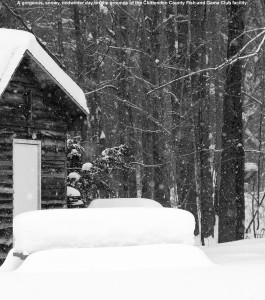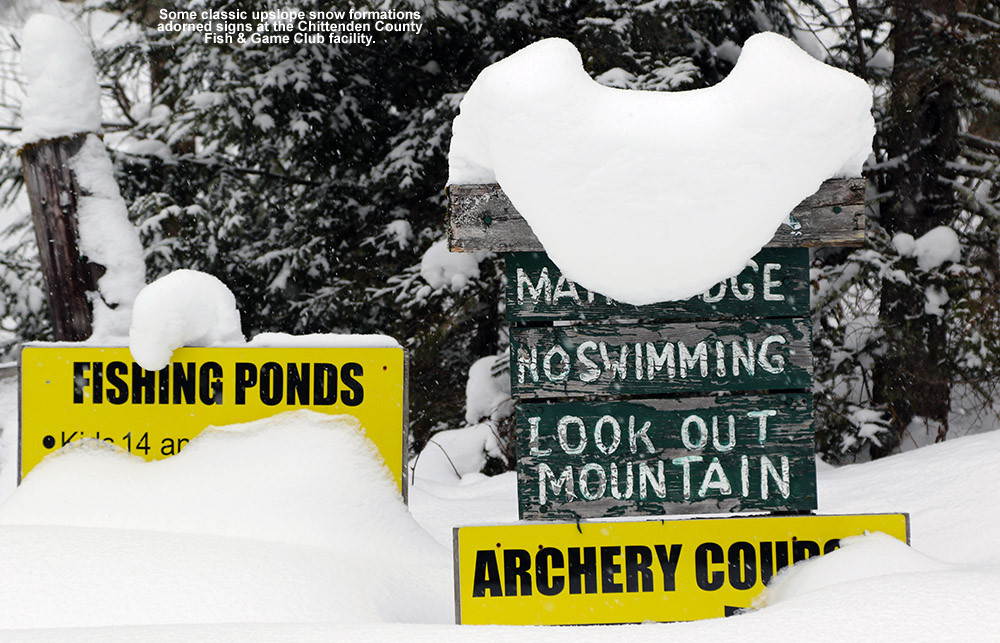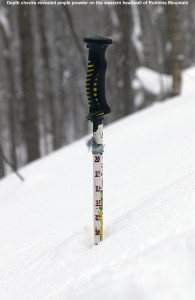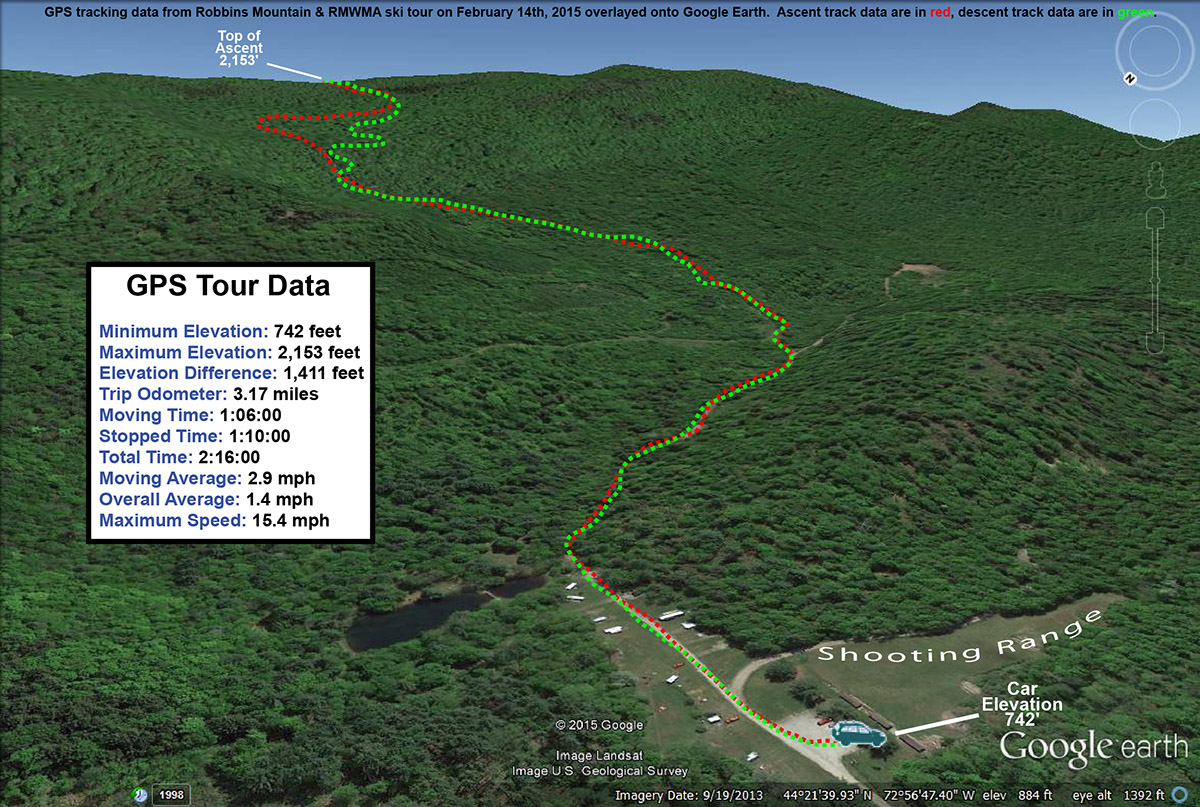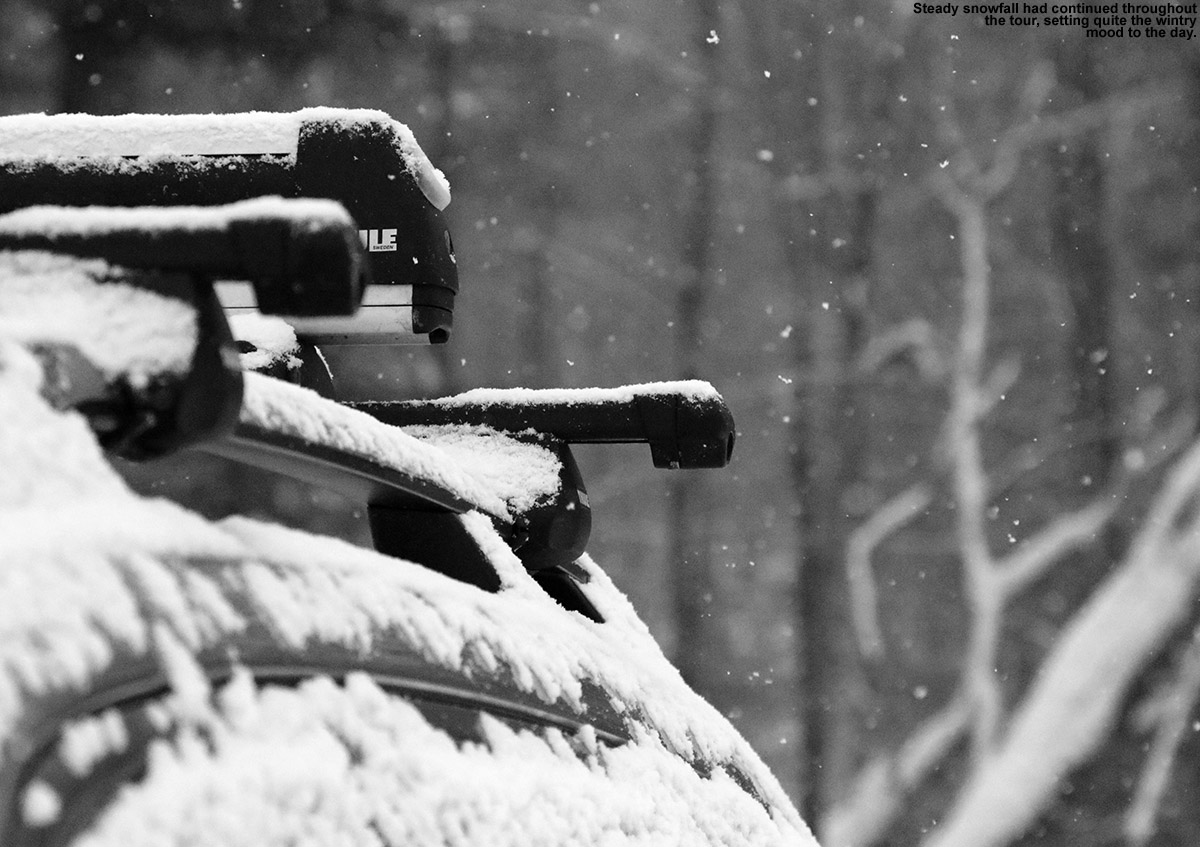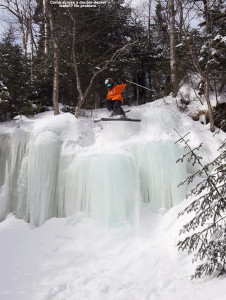
It’s been another one of those weeks without much new snow, so we didn’t have a ton of inspiration to get out on the slopes this weekend. There was a day or two during the midweek period that got into the 30s F in the valleys, and it might have warmed some of the south-facing or lower-elevation slopes in the mountains, but it didn’t seem like there had been enough warmth to affect the conditions in the higher elevations. Yesterday in a post on the American Weather Forum, Powderfreak mentioned that at Stowe, the upper mountain was in midwinter form. We didn’t ski yesterday with somewhat gray skies and mountain temperatures in the low 30s F, but today we had to head out in the afternoon for ski program. The forecast looked very unappealing – single digits at the summit elevations with winds pushing practical temperatures down into the -20s F. Morrisville canceled their ski program for today based on the forecast, and E considered it, but canceling for cold in late March just didn’t seem right. With a sun angle equivalent to September, it’s really hard to get that feel of deep winter cold this late in the season. Even when the temperature is the same, late March cold is just not what it is in mid-January. It would have been hard to inform everyone of a cancellation of the program this morning anyway, so ski program was on, and off to Stowe we went. I wasn’t too optimistic about the overall conditions off piste, and planned on a lot of on piste skiing, so it felt strange not packing the fat skis on the rack for the first time in what must be at least a couple of months.
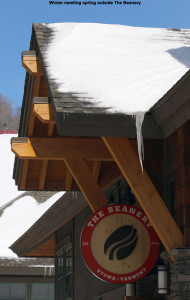
It was indeed brisk as we walked into the wind through the Spruce Peak Village, but as we gathered for meeting up with our ski groups in the sunshine at the base of Spruce Peak, it was clear that the March sunshine was beating out the cold. My plan was to take the group over to the Gondola to stay out of the wind and get a feel for the conditions in the higher elevations, and a quick conversation with Rick confirmed that the woods were the place to go. He said that the wind had pushed a lot of snow into the trees and the powder was fantastic. Hearing that, I decided that we’d explore some of the terrain that we’ve been eyeing above us whenever we return on the traverse from Angel Food. Very few people cut off the outward traverse prior to the main Angel Food line, and the powder just sits there. Several people from our group were actually out today for various reasons, so our crew was only six students with Ken and myself as coaches; that would be a very manageable number for out in the Angel Food trees
“I told everyone to hold up as I assessed the terrain options below, and found that we were right atop a 15-foot, double-decker frozen waterfall.”
Embarking on our first run, we were faced with the reality of what the wind had done to exposed slopes. The first hundred yards of Upper Gondolier was a heinous, bulletproof disaster. None of us generally pay too much attention to the sharpness of our ski edges since they’re typically not that critical for our usual skiing, but it hardly seemed to matter what edges were like on the start of that run. My carving skis typically have at least some edge, but heck if I could get a good hold on the stuff we hit. Fortunately, the snow improved as we got lower on the trail and the loose snow hadn’t been blasted away by the wind. Picking the right spots where the snow had collected actually yielded some decent turns, but you still had to be aware of scoured areas.
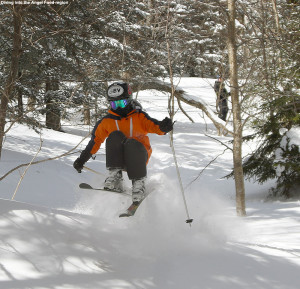
Fortunately we were into the trees within another couple of minutes, and it was an entirely different world. It was obvious that the idea of a spring thaw clearly has not caught on in the higher elevations; as everyone started to probe the state of the snowpack, they found themselves pushing their ski poles down past the handles as they disappeared into bottomless nothingness. We stopped on the Angel Food traverse about 50-100 yards before Angel Food itself, chose a nice area of untracked snow, and dropped in. As we headed down, a snowboarder on the traverse told us that we should be careful down there. I could only assume that meant cliffs or some sort of terrain trap, but whatever the case, I knew the kids could handle it.
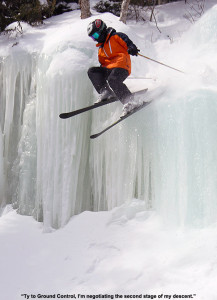
The powder skiing was fantastic, and everyone devoured the lines we found. At the completion of our first pitch, it was obvious what the guy up on the traverse had been talking about. I told everyone to hold up as I assessed the terrain options below, and found that we were right atop a 15-foot, double-decker frozen waterfall. I let the group know what lay below us, and said that everyone could take a look and decide what they wanted to do. Dylan said that he’d start looking for a way around that everyone could use as needed, and headed off to skiers right. I dropped into the icefall to get below it and scout the area, carefully negotiating a landing off to skier’s left to preserve the main landing zone for anyone else that wanted to jump. There was no doubt that it was a technical line; the options were either to drop the whole thing at once, or carefully dial in a landing on the small shelf below the first tier and then finish off the final drop into the powder. The entrance was very narrow, and I told the members of the group up top that if they wanted the most options, they should set themselves up for the entry with their ski tips to skier’s left. I assured them that the landing zone was clear, and filled with bottomless powder at a reasonable slope. Some folks assessed the jump from above; others could tell from afar that it was more than they were looking for and followed the route that Dylan had made around the side. Ultimately it was Ty and Wiley that decided to go for the drop. Although I made sure that they knew of the more conservative route of pausing on the middle tier, they both pretty much straight-lined it from the top. Ty went first and made an impressive show of essentially just touching down briefly on the middle tier during his drop, much like running a pillow line. Wiley took a line a bit more off to skier’s left and did a nice job, although he did eject when his skis sunk into the deep powder at the base of the icefall. Ken contemplated the drop as well, but after discussion we decided that it was better for him to go around and play it safe. Hats off to Ty and Wiley for going forth on that one, because I can tell you that when you looked down from the top of that thing you realized that you were higher than the roof of a single story house. Even with plenty of sloped, bottomless powder below, it still takes some skill and confidence to negotiate such an obstacle.
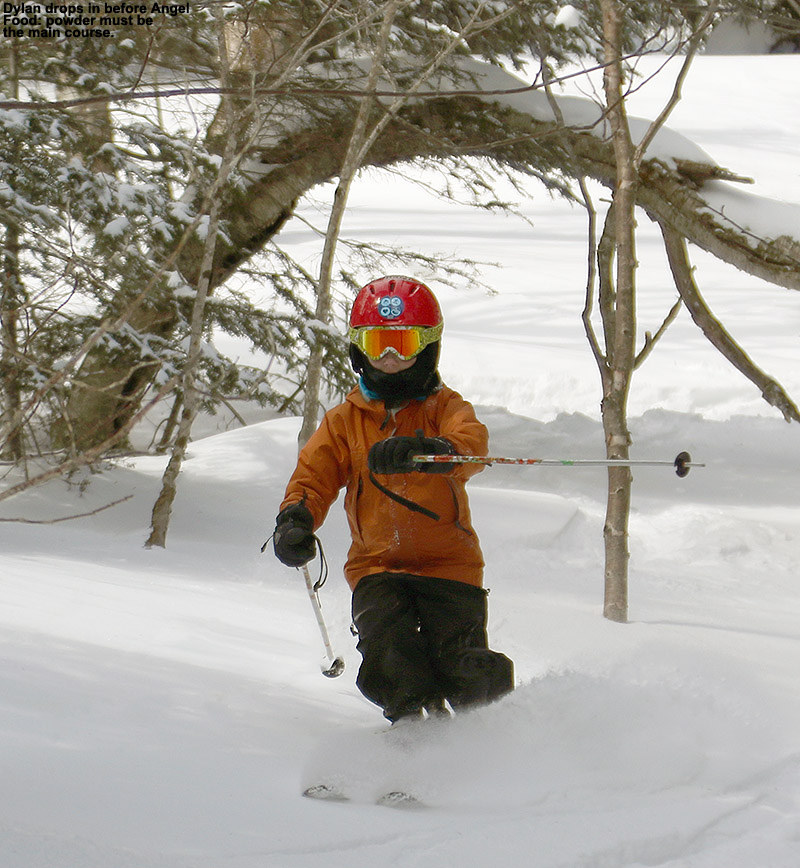
We didn’t encounter any more huge icefalls on that run, but we did find ourselves in a lot of untracked bottomless powder. We worked our way in and out of various gullies and ravines, and found that it was a veritable skier’s playground. After a while we ran into the main return traverse, and contemplated taking a longer run all the way down to Route 108, but the powder down at the base elevations was starting to get a bit shallower due to dense layers below that had been partially affected by spring temperatures. It seemed like the best bang for our buck would be to simply take the Gondola up and start from the top again. We paused for a brief snack and bathroom break in the Midway Lodge, and found the typically deserted upstairs seating area filled with people. To find it like that in the middle of a routine Sunday afternoon was very surprising, so there must have been something going on. We headed to the downstairs seating area instead, and found that it was fortunately deserted.
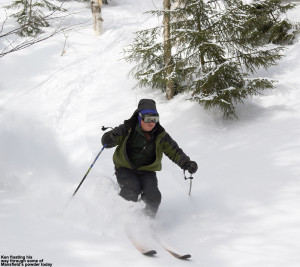
After our break it was right back up the Gondola and all the way out to Angel Food proper. Our approach this time was to ski the first pitch of the run, and then cut skier’s right into lines that would be farther north than what we’d just skied. After a bit of cutting through the evergreens, lines began to open up and the group was off into powder city again. We caught some great additional lines, and gradually found ourselves in some of the same drainages that we’d hit on the previous run. We mixed up our lines a bit based on our prior experience, and wound up coming out right at the bridge at the bottom of the traverse. The kids remarked at the four to five feet of snow that sat atop the bridge, which was a testament to the impressive snowpack that sits even at the base elevations of the resort.
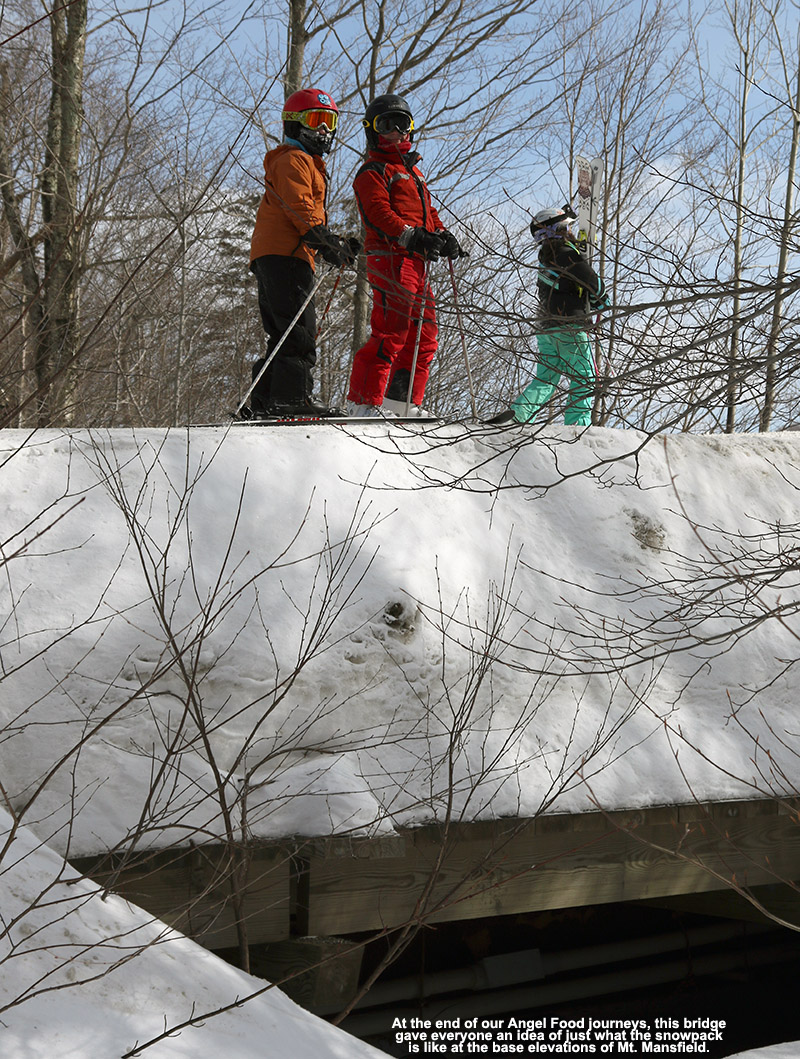
We headed back to Spruce Peak and while most of the kids headed off to the s’mores area, Kenny and Luc wanted to take another run, so I said I’d join them. Of course the quality of the snow was nothing like what we’d just been skiing, but I got to watch Kenny on the groomed snow putting down some impressive carves. He’s really improved a ton in the past couple of seasons, and as I’ve always expected with his athleticism, time on snow was all he’d need. I’d say my only regret from today was thinking that we’d be skiing on mostly groomed snow and not bringing our fat skis. My carving skis are fine, but I could feel the lack of width and rocker making turns just that little bit tougher when the powder started to get a bit shallower. I guess that’s what one gets for doubting Mt. Mansfield. The Mansfield manta should probably be, “If in doubt, bring the fat skis.” The powder skiing was great though, and by riding in the Gondola and skiing in the trees, any cold and wind were essentially non issues. When someone would crash in the powder today, the rest of the group would just sit down in the sun and relax, and it was really comfortable. Despite the initially daunting weather forecast, I have to admit that it was a fantastic day. By the end, Dylan had devised his own version of what the forecast should have been; he said the forecast should have indicated that “There was a high chance of awesomeness.” I’d say that forecast verified.
